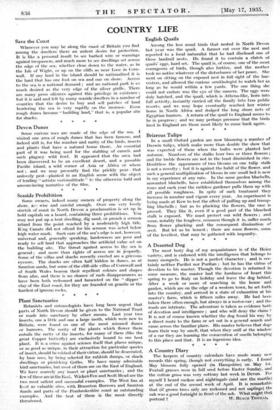Plant Sanctuaries Botanists and entomologists have long been urgent that
parts of North Devon should be given to the National Trust or made into sanctuary by other, means. Last year two insects, one a little and one a large moth, which were new to Britain, were found on one of the most misused dunes or burrows. The rarity of the plants which flower there entails the rarity of the insects, for many of them (like the great Copper butterfly) are exclusively bound to one host plant. It is a crime against science itself that places unique, or as good as unique, in their attraction for particular species of insect, should be robbed of their virtue, should be desecrated, by base uses, by being selected for ruhbish dumps, or shack dwellings or picnicking Goths. We have many admirable bird sanctuaries, but most of them are on the East of England. We have scarcely any insect or plant sanctuaries ; and the ' few of these arc in the East. Wieken Fen and Scolt Head are the two most salient and successful examples. The-West has at lef.st as valuable sites, with Braunton Burrows and Saunton Sands and parts of the Pembrokeshire coast as outstanding examples. And the best of these is the most- directly threatened.










































 Previous page
Previous page